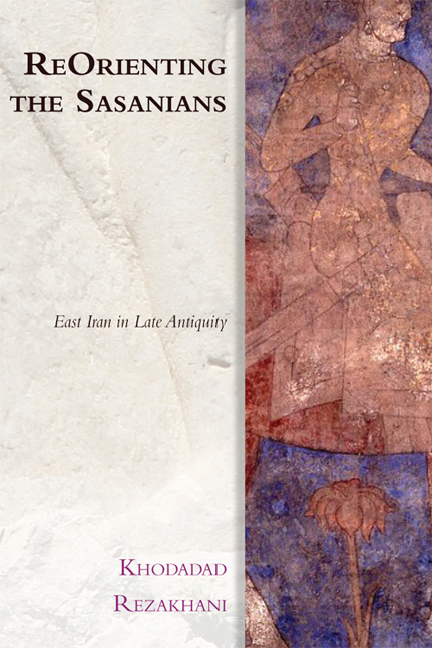Book contents
- Frontmatter
- Contents
- List of Illustrations
- Acknowledgements
- Series Editor's Preface
- Maps
- Preface
- Introduction
- 1 The Sasanians and the Sistanis
- 2 The Kushans and the Sasanians
- 3 The Kushano-Sasanians in East Iran
- 4 The Iranian Huns and the Kidarites
- 5 The Alkhans in the Southern Hindu Kush
- 6 The Hephthalite ‘Empire’ and its Successors
- 7 Sogdiana in the Kidarite and Hephthalite Periods
- 8 The Nēzak and Turk Periods
- 9 Tokharistan and Sogdiana in the Late Sasanian Period
- 10 General Conclusions and Postscript
- 11 Epilogue and Excursus on the Shahnameh
- Bibliography
- Index
7 - Sogdiana in the Kidarite and Hephthalite Periods
Published online by Cambridge University Press: 07 December 2017
- Frontmatter
- Contents
- List of Illustrations
- Acknowledgements
- Series Editor's Preface
- Maps
- Preface
- Introduction
- 1 The Sasanians and the Sistanis
- 2 The Kushans and the Sasanians
- 3 The Kushano-Sasanians in East Iran
- 4 The Iranian Huns and the Kidarites
- 5 The Alkhans in the Southern Hindu Kush
- 6 The Hephthalite ‘Empire’ and its Successors
- 7 Sogdiana in the Kidarite and Hephthalite Periods
- 8 The Nēzak and Turk Periods
- 9 Tokharistan and Sogdiana in the Late Sasanian Period
- 10 General Conclusions and Postscript
- 11 Epilogue and Excursus on the Shahnameh
- Bibliography
- Index
Summary
INTRODUCTION
Compared to Bactria/Tokharistan, Sogdiana appears to have been less urbanised, with a less sophisticated system of irrigation and agriculture and underdeveloped commercial networks. While we have evidence of the existence of Sogdian traders in the fourth century, archaeological excavations show little sign of urbanisation or centralised state structure in the region. The economy of Sogdiana was based on agriculture in the valleys of the Oxus and its tributaries, most importantly the Zarafshan or Sughd. Minor kings, known at least from the time of Alexander, ruled over the area, although it seems with minimal influence. A monetary system based on lowvalue token coins, borrowed from the Graeco-Bactrians, also existed, which must have facilitated internal trade in the Sogdian core territories. However, starting in the fourth and fifth centuries, Sogdiana was invaded by the steppe people, and thus entered into the affairs of the larger region. It appears that in the Kidarite and Hephthalite periods, it came under the influence of powers in Bactria/Tokharistan, and thus embarked on the course of world history as we know it. Merchant networks, a city-state system, and the benefits of access to India and China launched Sogdians on a path of growth. The most important result of this was the emergence of the famous Sogdian merchant network, which controlled trade in most of Asia, from Korea to India and the Pontic Steppe until the tenth century AD. In the early Islamic period too, Sogdians came to be influential in both the political and the economic life of the caliphate, and, of course, it was in Sogdiana that the Samanids and other medieval powers came to establish themselves. Consequently, a brief examination of the history of Sogdiana and its initial proliferation in the Kidarite and Hephthalite periods is warranted.
SOGDIANA IN THE FIFTH CENTURY AD
Specifically speaking, Sogdiana, from the local term Sughd, is the name most often applied to the valley of the lower Zarafshan, around the cities of Samarkand – occasionally called Sughd in the absolute sense – and Bukhara (Marshak and Negmatov 1999: 237–8).
- Type
- Chapter
- Information
- ReOrienting the SasaniansEast Iran in Late Antiquity, pp. 147 - 156Publisher: Edinburgh University PressPrint publication year: 2017



